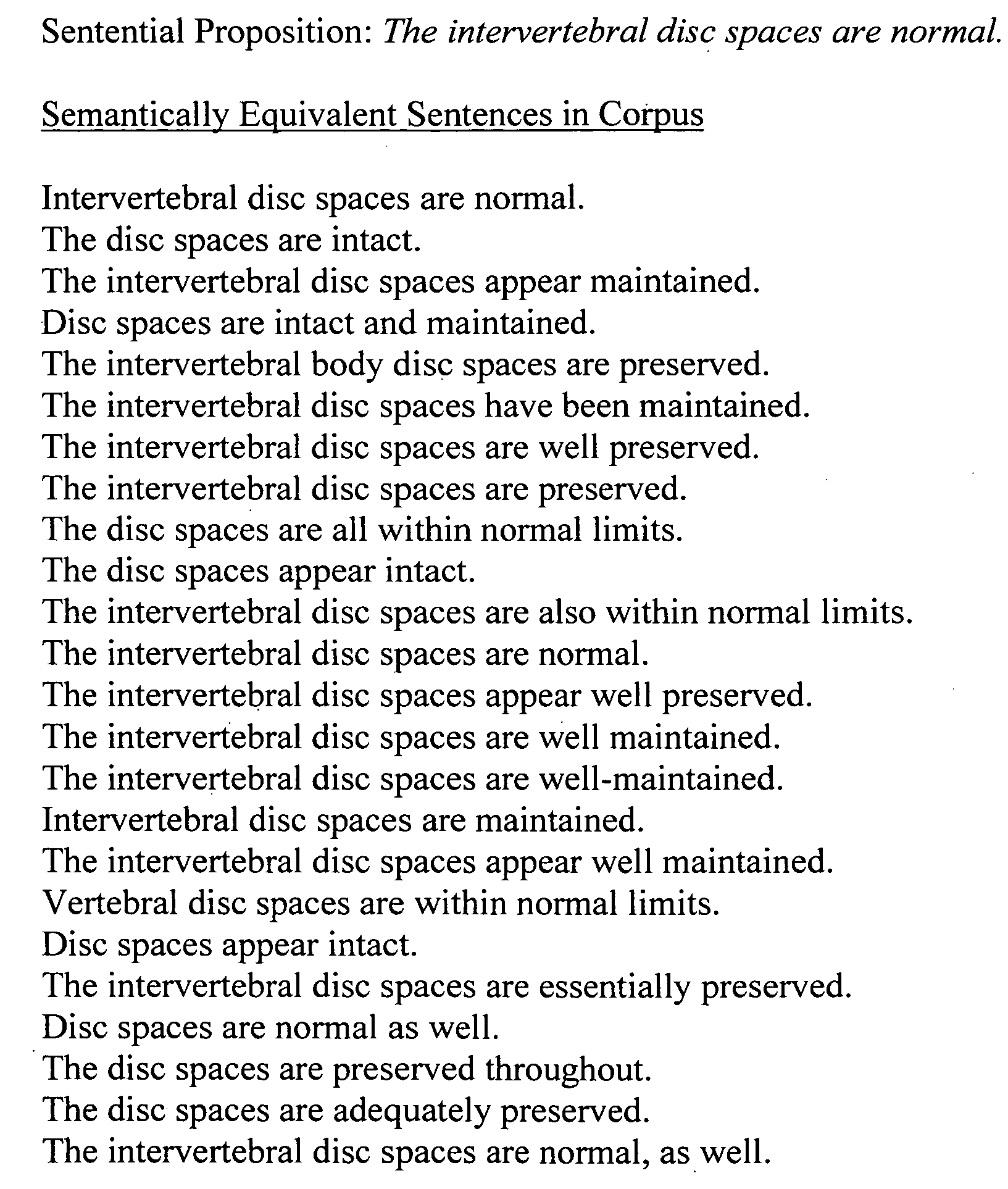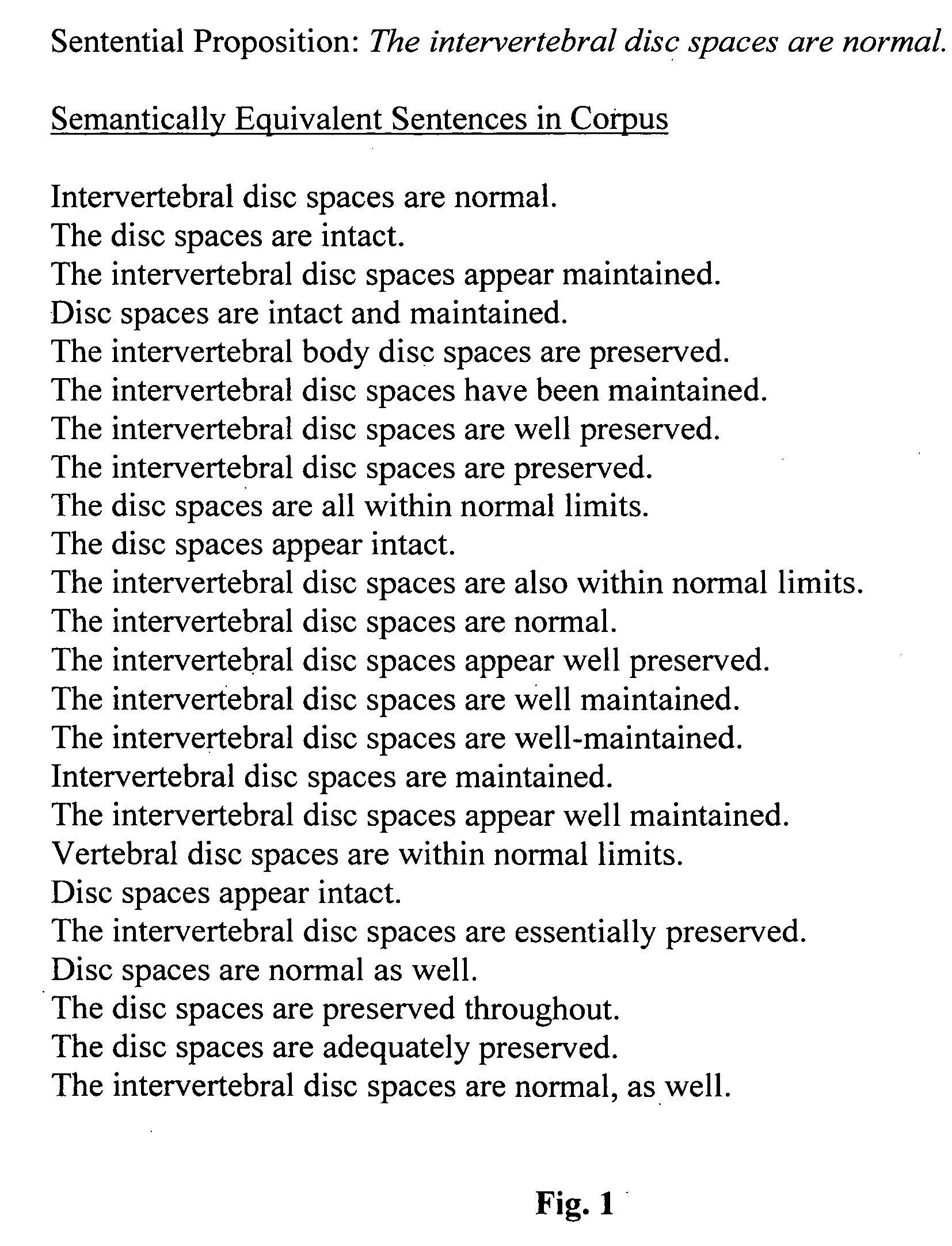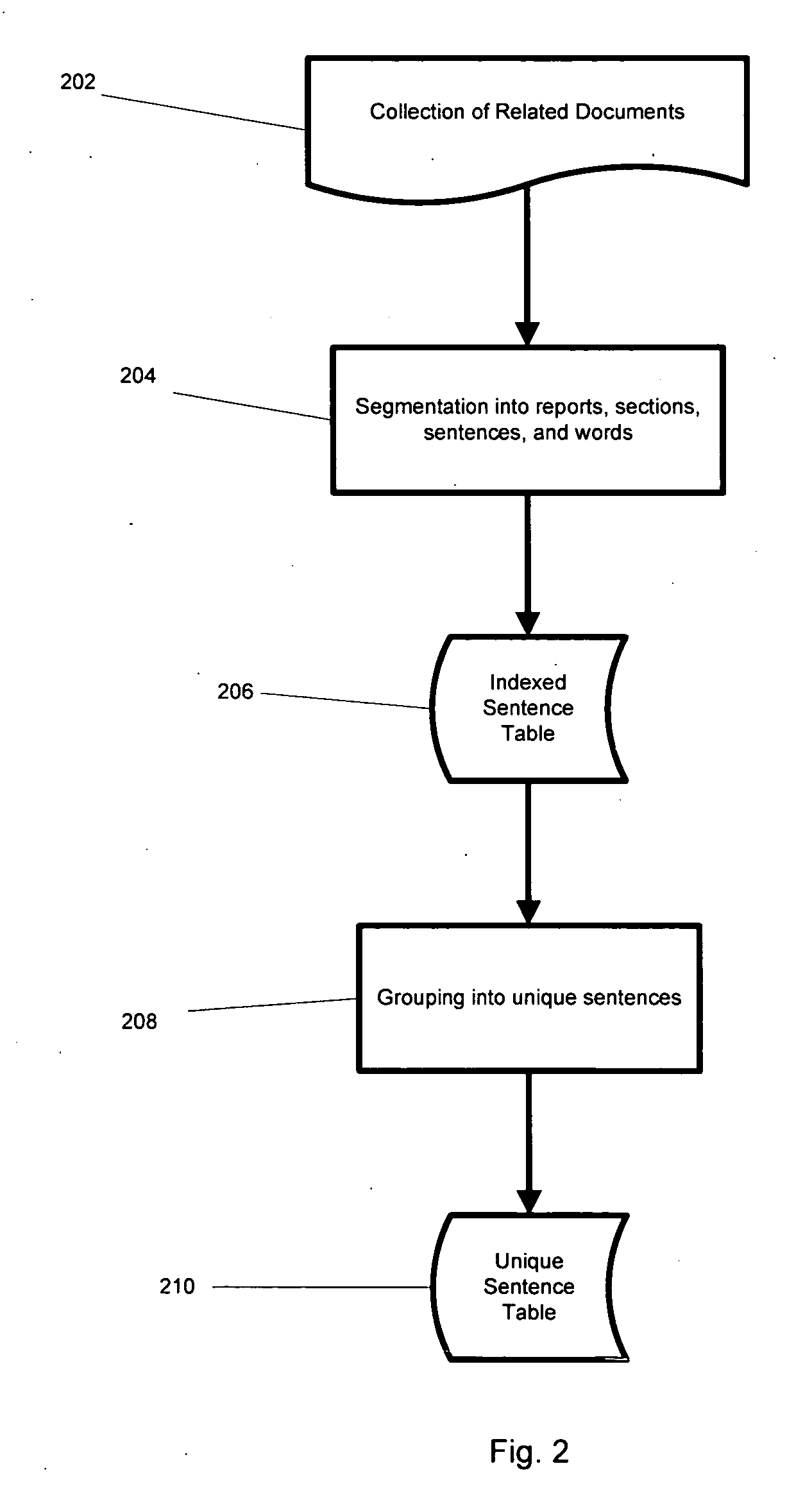However, while the value of coded information for decision support,
quality assurance, and
text mining is readily understood, satisfactory methods are not available for building a comprehensive
semantic knowledge base efficiently and inexpensively, which can provide a means to code these free text documents.
However, even after a sizable investment over many years by different companies, the technology remains too immature to be used in commercial coding applications except against relatively small code sets.
Understanding
human language is extremely knowledge intensive and discourse specific.
The tools and knowledge representation methods for creating this kind of knowledge are limited.
The syntactic-semantic
parsing approach, which relies mainly on grammatical and lexical rules, is too rigid and cannot reliably determine the
semantic equivalence of different
sentence expressions for even a moderately sized knowledge domain.
Many systems have been proposed to semantically search free text, but they are impossible to evaluate without more precisely defining the criteria for their operation.
The writer probably meant “The heart is normal and the lungs are clear.” Unfortunately, most computer systems do not possess common sense knowledge and cannot correct or make valid inferences about a writer's intention.
Many computational linguists would agree with requirement two but this requires detailed
domain knowledge that is often lacking.
Data mining and decision support are impaired in direct proportion to divergent coding.
Although state of the art in information-retrieval (IR) technology makes it possible to return sentences by relevance
ranking, it cannot provide answers to basic semantic queries such as “How many patients had right lower lobe pneumonia?” or “Which patients had a diffuse pulmonary infiltrate?” over a corpus.
IR algorithms retrieve documents based on keywords but can not anticipate the hundreds of different possible ways the same knowledge can be embedded within a
sentence.
(2003), in U.S. Pat. No. 6,507,829, point out that possible combination of words in a language number in the billions, even when the length of the combination is restricted to those of five words or less, thus making it seemingly impossible to use strong methods such as string matching to identify equivalent
semantics.
This makes it unsuitable for classifying the
semantics of a free
text document collection where the classification vectors are not known in advance.
His approach returned an association between sets of strings, but did not produce a semantic
knowledge base or a means to associate sentences to discrete semantic propositions.
However, there are several limitations to his approach.
The
system can not in many cases accurately assign linguistically diverse but semantically equivalent sentences to the same CRCs, because there are potentially hundreds of different ways writers can express the same
sentence meaning, and the rules for CRC extraction can not anticipate all these ways.
Thus they can not choose the preferred terms in CRCs, the predicates which relate concepts, or arrange them in a knowledge hierarchy.
However, it is exceedingly difficult for a computer using automated extraction rules to make this
inference.
There are well known problems in the art with syntactically
parsing sentences that computational linguistics have yet to solve.
Syntactic analysis has not solved the problem of modifier attachment.
Additionally, a great deal of English uses non-grammatical expressions which make it difficult for
natural language processing approaches which rely on syntactic analysis.
However, if the parser makes an error because it cannot syntactically parse the sentence correctly; there is little chance that the semantic assignment will be done accurately.
However, she cannot represent the meaning of the entire sentence.
However, Wical was not unable to represent the semantics of sentences at a granular
level of detail nor does he try to represent the complex inter-relationships between words in a sentence.
One cannot tell if the semantics of an entire sentence can be captured, because these systems only attempt to identify a limited number of predefined concepts, rather than extracting the entire meaning of the sentence.
Defining a complete set of predicates (especially multi-valued predicates) and terms for even a moderately sized knowledge domain is an unsolved problem in computational linguistics.
Unfortunately, even these vocabularies have limited coverage for many concepts used in
medical documents.
Additionally, lexical coding schemes do not include all the relevant words such as
noun modifiers that describe medical concepts, and often do not code for all the concepts in a medical document collection.
No lexicons provide the means to code the semantics of complete sentences.
The current art also fails to support the role domain experts play in constructing such a
knowledge base and semantically annotating sentences.
Yet, by themselves, domain experts would face immense obstacles to building a knowledge base and perform
semantic annotation for even a moderately sized domain.
Currently, there are no integrated tools and methods that would enable
a domain expert to create sentential proposition(s) that reflect the underlying meaning of entire sentences within a free text
record in a consistent manner.
There are no inexpensive, reliable means for
a domain expert to create a semantic knowledge base of codeable entries that represent in an invariant manner semantically equivalent sentences in a collection of related free text documents.
 Login to View More
Login to View More  Login to View More
Login to View More 


